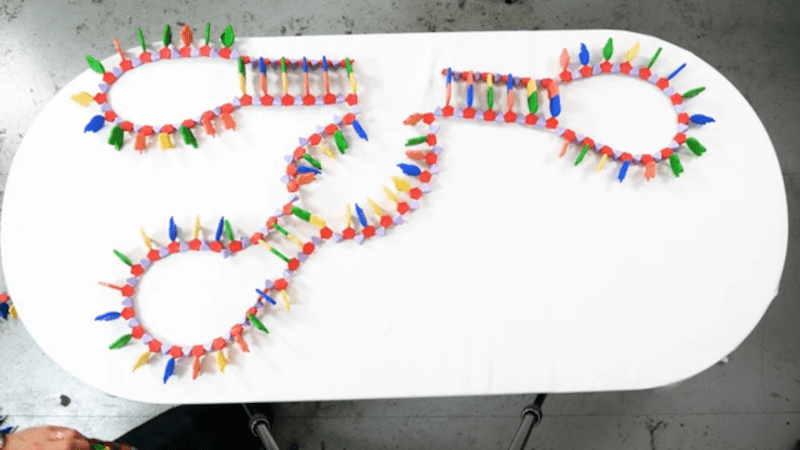We often say you can make logic gates out of nearly anything. [Steve Mould] would agree as he just finished playing naughts and crosses (tic tac toe if you are an American) with a tray full of DNA. You can see the resulting game and how it works in the video below.
The use of DNA isn’t really significant as it simply implements a logic equation for each of the nine cells. So, for example, each cell is taken by an X (the DNA) only when certain other squares have been taken by O or not taken by O. So you essentially create an AND/OR gate using the state of each cell and its inverse.
Of course, the key is how do you input your moves and how does the DNA process the equations? The input is simple. You add a different solution for each move and turn to each cell. The processing requires a little lab work as explained in the video.
Honestly, this reminded us of a diode logic project from 1976. It seems like a program, but really it is just a clever use of combinatorial logic. Practical? Maybe not, but it is illustrative of how things are different in the biochemical world. And as we always say, practically anything can be a logic gate. Really.

















The most important part when doing computing is reliability. Last I heard, a breakthrough made it so that errors only occurred once in ~3000 DNA logic gates. Good but still not good enough for computing.
And somehow we mostly survive.
Because we have ECC (T-cells)
This reminds me a bit of EPROM logic, which in turn is based on diode logic or diode matrices, more precisely. Early morse IS keyers were using mechanical disc, then diode matrices, then EPROMs. EPROMs are really fascinating, because with the proper programming and wiring (outputs to inputs), they act like computers kind of.
*ID keyers
interesting would be encoding the source code of the most popular repositorys on github in dna put it in a cell and see if the cell can live
Pretty cool, but not as cool as solving the traveling salesman problem with DNA:
https://www.i-programmer.info/news/181-algorithms/9340-traveling-salesman-applied-to-dna-synthesis.html
I’m not believing you can both be smart enough to build logic out of DNA, and dumb enough to not tie at tic-tac-toe